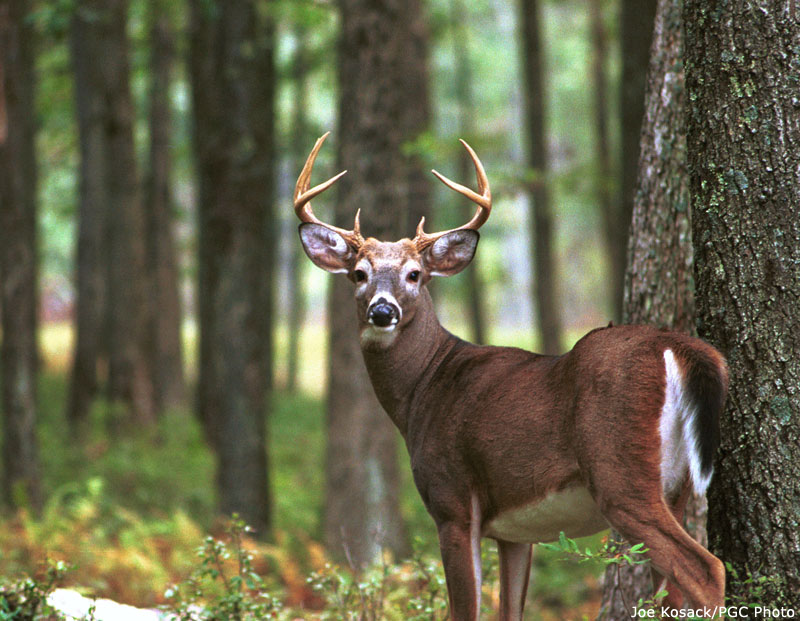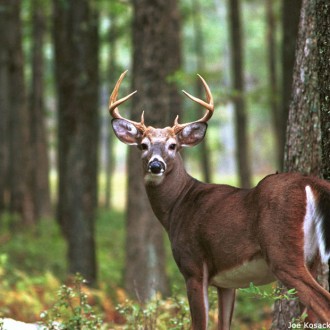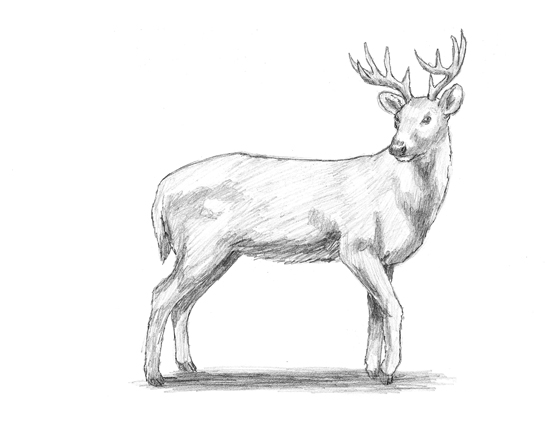


How to Draw a White-Tailed Deer
Please PAUSE the video after each step to draw at your own pace (scroll down to see the final white-tailed deer drawing).
For the first few steps, don’t press down too hard with your pencil. Use light, smooth strokes to begin.
Step 1: Draw two circles as guides for the white-tailed deer’s body. They don’t have to be perfect. They’re just guides.
Step 2: Draw a triangle with rounded corners on the top right side as a guide for the deer’s head.
Step 3: Inside, draw two intersecting lines to help you place the deer’s facial features later.
Step 4: Draw two arcs on top of the head as guides for the deer’s ears.
Step 5: Draw two curved lines on top of the deer’s head as guides for the antlers.
Step 6: Draw a series of curved lines to connect the major shapes and form the deer’s body.
Step 7: Draw three curved lines under the white-tailed deer’s body as guides for the legs.
That’s it for the initial sketch! From this point on, press harder with your pencil to get a more defined sketch.
Step 8: Draw the deer’s eyes using the guidelines to help with placement. The shape of the eyes is similar to a football. Draw the deer’s left eye smaller and shade them in.
Step 9: Draw the muzzle on the lower left side of the triangle. The deer’s nose is curved at the bottom with quick, short strokes on top for the fur. Shade in a small shape inside of it for the nostril. The mouth is a line directly below the nose. The deer’s chin is a curved line below the mouth.
Step 10: Use the initial shapes as a guide to draw the deer’s ears. Use quick, short strokes in and around the ear to give it more structure.
Step 11: Use the initial guides as a base for drawing the deer’s antlers. The initial lines act as the bottom of the antlers, so just draw a few more spikes on top. It’s a good idea to have reference to get the shape of the deer’s antlers just right. Draw the right antler the same way, except make it curve a bit more. Draw slowly and pause the video to get the correct shape of the deer’s antlers.
Step 12: Use the triangle as a guide to draw the rest of the white-tailed deer’s head.
Step 13: Use the initial line to draw the deer’s front leg. Sketch the leg in lightly at first, then darken it when you’re satisfied with what you have. Use curved lines to bend the leg and draw bumps at the joints. Draw the white-tailed deer’s hoof at the bottom. The deer’s left leg is hidden behind the right leg, so only draw the visible part.
Step 14: Use the guides again to draw the deer’s hind legs. Use the same technique: lightly at first, then darker. Draw the legs thick at the top and taper them down toward the hooves.
Step 15: Use the guides to draw the rest of the deer’s body and tail.
Step 16 (optional): You can stop here for a sketchy look or erase as much as you can of the guide lines for a cleaner look. Don’t worry about erasing them all. It’s okay to leave some behind and re-draw anything you accidentally erase.
Step 17 (optional): You can add some shading to give your white-tailed deer’s drawing more dimension and volume. Pick the direction of the light source when shading so that the shadows are consistent with it. Shading helps define the muscles and adds structure. It’s a good idea to use reference to be as accurate as possible.
Step 18 (optional): Add a cast shadow underneath your white-tailed deer drawing. This helps ground the deer so it doesn’t appear to be floating.
Step 19 (optional): You can add more value throughout your white-tailed deer drawing for extra detail. Vary the pressure on your pencil to get different degrees of tonal value.


 (1 votes, average: 4.00 out of 5)
(1 votes, average: 4.00 out of 5)